How Much Sod Do I Need? A Complete Guide to Calculating Sod and Soil for Your Lawn

When you’re ready to transform your lawn into a lush, green oasis, one of the first steps is figuring out exactly how much sod and soil you need. While it may seem like a straightforward task, accurate calculations are crucial to ensure you purchase the right amount, saving you time, money, and the frustration of running out of materials mid-project. In this blog, we’ll guide you through the process step by step, so you can confidently answer the question, “How much sod do I need?”
Understanding Sod and Soil Requirements
Before diving into the calculations, it’s important to understand what sod and soil are and why they’re both essential for your lawn project. Before diving into the calculations, it’s important to understand what sod and soil are and why they’re both essential for your lawn project.
What Is Sod?
Sod is pre-grown grass that comes with a thin layer of soil, held together by the grass roots. It’s typically sold in rolls or squares and provides an instant green lawn that looks great and stabilizes the soil, preventing erosion. Sod is a popular choice for homeowners who want to quickly establish a lawn without the long wait associated with seeding.
The Role of Soil
Soil is the foundation of your lawn, providing the nutrients and structure that grass needs to grow strong and healthy. The quality and depth of the soil are critical to the success of your sod installation. If your soil is too shallow or of poor quality, your sod may struggle to take root, leading to a patchy or unhealthy lawn.
Factors Affecting Sod and Soil Needs
Several factors influence how much sod and soil you’ll need. The size of your lawn is the most obvious, but you should also consider the condition of your existing soil, the type of sod you’re using, and any unique features of your lawn, such as slopes or irregular shapes.
How to Measure Your Lawn Area
The first step in determining how much sod and soil you need is to measure your lawn area. This can be a bit tricky if your lawn isn’t a perfect rectangle, but breaking it down into manageable sections will make the process easier.
Step 1: Divide the Lawn into Manageable Sections
If your lawn is irregularly shaped, start by dividing it into smaller sections that are easier to measure. These sections could be squares, rectangles, triangles, or even circles. The goal is to simplify the area into shapes with easily calculable areas.
Step 2: Measure the Dimensions
Using a measuring tape or a digital measuring tool, measure the length and width of each section. For non-rectangular areas, measure the longest and widest points, and take note of these dimensions. Accurate measurements are key to ensuring you order the correct amount of sod and soil.
Step 3: Calculate the Area for Each Section
Once you have the measurements, calculate the area of each section. For rectangles and squares, use the formula:
Area = Length x Width
For triangles, use:
Area = 0.5 x Base x Height
For circles, use:
Area = π x (Radius^2)
Add up the areas of all sections to get the total lawn area.
Step 4: Add Up the Areas
After calculating the area of each section, sum them up to get the total lawn area. This total will be the basis for calculating how much sod and soil you need. If your lawn has particularly complex shapes, consider using an online area calculator to double-check your math.

Calculating the Amount of Sod Needed
Now that you know the total area of your lawn, you can determine how much sod to purchase.
Determine the Total Lawn Area
Reinforce your total lawn area calculation before proceeding. This number is crucial as it directly impacts how much sod you’ll need.
Calculate Sod Rolls or Squares Needed
Sod is typically sold in rolls that cover about 10 square feet or in squares that cover around 1 square yard. To calculate how many rolls or squares you’ll need, use the following formula:
Number of Rolls/Squares = Total Lawn Area / Area Covered by One Roll/Square
For example, if your lawn area is 1,000 total square feet and one sod roll covers 10 square feet, you’ll need 100 rolls of sod.
Consider Waste Factor
It’s always wise to order a bit more sod than you calculate, to account for waste due to cutting, fitting around curves, or handling irregularly shaped areas. Adding an extra 5-10% to your total will ensure you have enough sod to cover your entire lawn without making a second trip to the supplier.
Estimating Soil Requirements
With your sod needs figured out, it’s time to determine how much soil you’ll need.
Soil Depth Considerations
The depth of the soil is a critical factor in sod installation. Typically, you’ll need 4 to 6 inches of good-quality soil for your sod to take root properly. If you’re working with existing soil, you may only need to add a few inches of topsoil or soil amendments.
Calculate the Volume of Soil Needed
To calculate the volume of soil needed, use the formula:
Volume = Lawn Area x Soil Depth
For instance, if your lawn area is 1,000 square feet and you need 6 inches (0.5 feet) of soil, the calculation would be:
Volume = 1,000 sq ft x 0.5 ft = 500 cubic feet
Since soil is often sold in cubic yards, you will need to convert cubic feet to cubic yards by dividing the total by 27:
Volume in Cubic Yards = 500 / 27 ≈ 18.5 cubic yards.
This means you’ll need about 19 cubic yards of soil.
Check Soil Condition
Before purchasing soil, it’s a good idea to test your existing soil’s condition. If your soil is compacted, lacks nutrients, or has poor drainage, you may need to remove or amend it before adding new soil. This step ensures that your sod will have the best possible environment to thrive.
Tips for Ordering Sod and Soil
Once you’ve calculated how much sod and soil you need, it’s time to place your order. Here are a few tips to ensure a smooth process.
Order from a Reputable Supplier
Quality matters when it comes to sod and soil. High-quality sod and soil that are essential for creating a beautiful and long-lasting lawn. By choosing a reputable supplier, you guarantee that you’re getting the best products for your project.
Timing Your Order
Timing is crucial in sod installation. Sod should be laid soon after delivery to prevent it from drying out or being damaged. Plan your order so that your sod and soil arrive on the day or the day before you plan to start your project.
Storing Sod and Soil Properly
If you can’t lay your sod immediately, keep it in a shaded area and water it lightly to prevent it from drying out. Soil should be kept dry and covered if rain is in the forecast.
In Summary
Calculating how much sod and soil you need doesn’t have to be a daunting task. By following the steps outlined in this blog, you can ensure that you order the right amount of materials, making your lawn transformation project a success. Whether you’re looking for a lush green lawn or revitalizing your existing landscape, the team at Lavington Turf Farms is here to help. Contact us today for personalized assistance, quotes, and delivery options, and take the first step toward the lawn of your dreams.
Choosing the Right Grass Seed for the Okanagan Climate: Turf for Local Climate
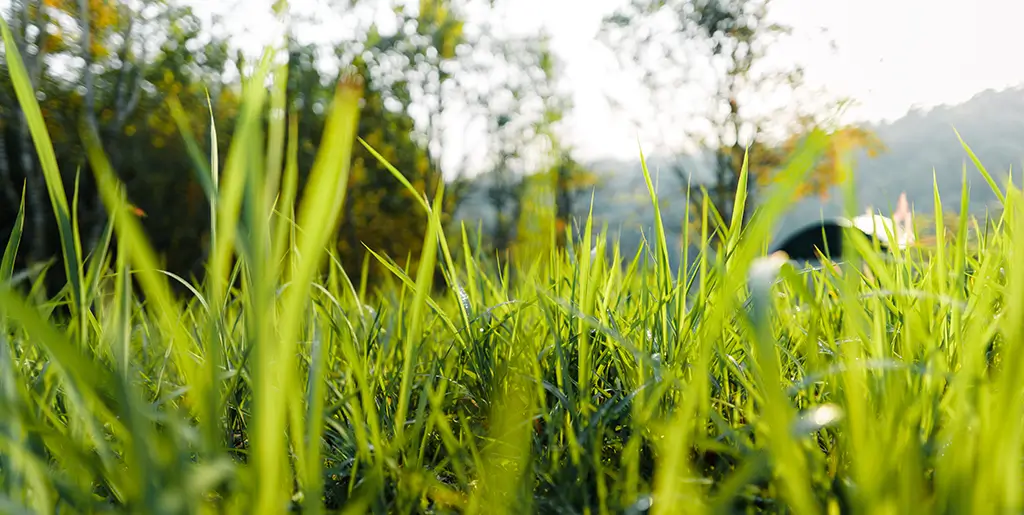
Maintaining a lush, green lawn is a sense of pride for majority of homeowners in the Okanagan. However, the challenge of grass dying off during the offseason can be frustrating and disheartening. One common mistake is using grass seed sourced from regions with different climates, such as Vancouver. This blog explores why buying grass seed from Vancouver may not be the best choice for the Okanagan and emphasizes the importance of choosing the right grass seed for the Okanagan’s unique climate.
Understanding the Okanagan Climate and Its Impact on Grass
The Okanagan Valley, with its hot summers and cold winters, presents a unique set of challenges for maintaining a healthy lawn. The region experiences extreme temperature variations, with scorching heat in the summer and freezing conditions in the winter. These climatic extremes can stress grass plants, leading to off-season die-off if the wrong seed is chosen.
Different grass species have varying tolerances to temperature, moisture, and soil conditions. For instance, cool-season grasses like Kentucky bluegrass and fescues thrive in cooler climates and have durable recovery for both drought and cold conditions. Conversely, warm-season grasses such as Bermuda grass can handle the heat but may not survive the cold winters.
Common Problems with Using Grass Seed from Different Regions
One of the key issues with using grass seed sourced from Vancouver or other regions is that these seeds are not tailored to the Okanagan’s specific climate. Vancouver has a milder, more temperate climate, which means that grass varieties suited for Vancouver may not be able to withstand the Okanagan’s harsher conditions.
Using inappropriate grass seed can lead to a range of problems:
- Offseason Die-Off: Grass that isn’t suited to the local climate may not survive the extreme temperatures of the offseason, leading to a patchy, unhealthy lawn.
- Increased Maintenance: Grass that struggles to adapt to the local climate often requires more water, fertilizer, and care, increasing the time and cost of lawn maintenance.
- Poor Lawn Health: Grass that is not climate-compatible may be more susceptible to diseases and pests, resulting in a weaker, less resilient lawn.
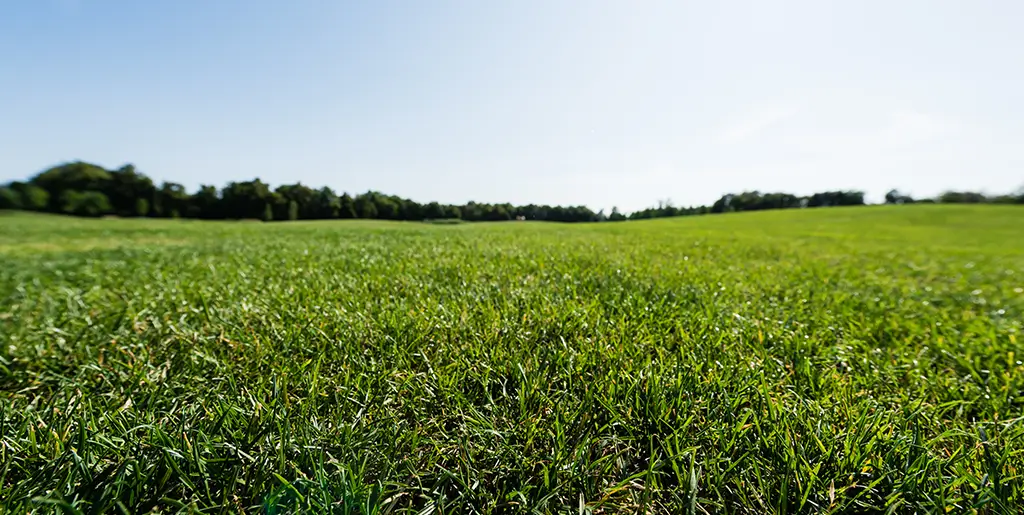
Turf for Local Climate: Benefits and Importance
Choosing natural grass seed that is specifically adapted to the Okanagan’s climate—known as “turf for local climate”—offers numerous benefits. Here are some key advantages:
- Enhanced Resilience: Grass varieties suited to the local climate are better equipped to handle the region’s temperature extremes and varying moisture levels, resulting in a healthier, more resilient lawn.
- Reduced Maintenance: Climate-compatible grass requires less water, fertilizer, and overall care, making it easier and more cost-effective to maintain.
- Improved Lawn Health: Local grass varieties are less susceptible to diseases and pests, resulting in a stronger lawn and enchanced aesthetic appeal.
Identifying the Right Grass Seed for the Okanagan
Selecting the right grass seed for the Okanagan involves understanding the specific requirements of the region’s climate. Here are some tips to help you choose the best grass seed for your lawn:
- Research Local Varieties: Investigate grass species that are known to thrive in the Okanagan. Common choices include drought-tolerant varieties like Kentucly Bluegrass, Bermuda grass, Buffalo grass, and fine fescues.
- Consult Local Experts: Visit local nurseries or consult with turf providers to get advice on the best grass seed for your area. These experts can offer valuable insights into which varieties will perform best in the Okanagan’s climate.
- Check Seed Labels: When purchasing grass seed, check the label to ensure that it is suitable for your climate zone. Look for seeds that mention drought tolerance and temperature resilience.
Best Practices for Grass Offseason Care in the Okanagan
Proper off-season care is essential for maintaining a healthy and beautiful lawn throughout the year. Here are some best practices to help your grass survive the Okanagan’s harsh offseason conditions:
- Soil Preparation: Aerate and add organic matter to ensure your soil is well-prepared. This helps improve drainage and provides a better-growing environment for your grass.
- Watering: Adjust your watering schedule to match the season. In the hot summer months, water deeply but infrequently to encourage deep root growth. In the winter, reduce watering to prevent waterlogging and root rot.
- Fertilization: Use a balanced fertilizer to provide essential nutrients for your grass. Avoid over-fertilizing, as it can lead to excessive growth and increased vulnerability to pests and diseases.
- Protection: Mulch or lawn blankets can help insulate the soil and reduce temperature fluctuations, protecting your lawn from extreme temperatures.
Choose the Right Grass Seed
Choosing the right grass seed for the Okanagan climate is crucial for maintaining a healthy, vibrant lawn year-round. By avoiding grass seed sourced from regions with different climates, such as Vancouver, and opting for climate-compatible varieties, you can prevent off-season die-offs and enjoy a resilient, low-maintenance lawn.
Remember, the key to a thriving lawn in the Okanagan is selecting grass seed that is tailored to the local climate. Embrace the benefits of turf for local climate and invest in grass seed that is suited to the Okanagan’s unique conditions.
For further guidance, consult with local landscapers or turf providers to select the best grass seed for your lawn. By making informed choices, you can achieve a beautiful, sustainable lawn that thrives in the Okanagan climate. For personalized advice and high-quality grass seed, feel free to contact us at Lavington Turf Farms.
How to Choose the Best Turf Near Me: A Comprehensive Budget Guide
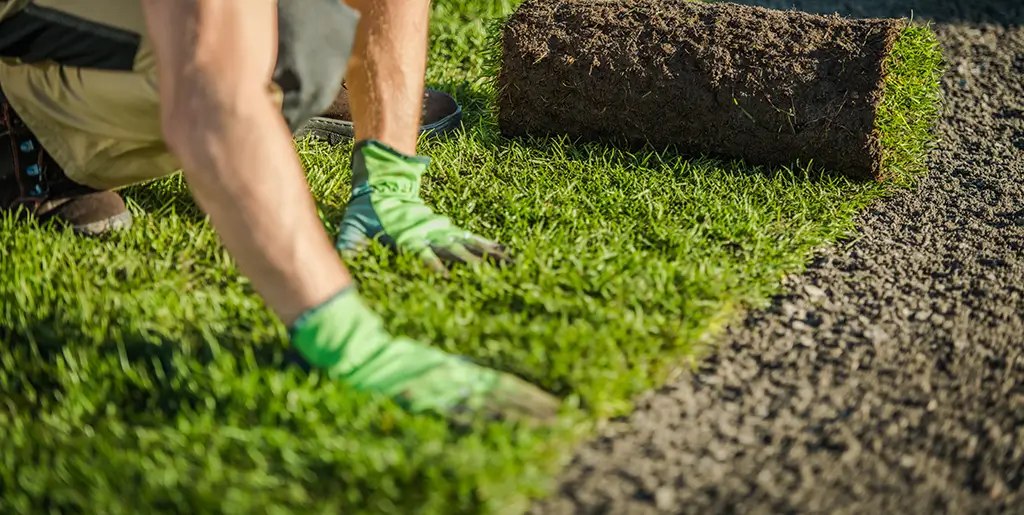
A well-maintained lawn enhances property value and aesthetic appeal, making it a vital feature for many homeowners. However, finding the right turf that fits both your needs and budget can be challenging. This comprehensive guide will help you navigate the process of choosing the best turf near me while sticking to a budget.
Understanding Your Needs
Assessing Lawn Size and Use
The first step in choosing the best turf is to assess your lawn’s size and intended use. The size of your lawn will directly impact the cost, as larger areas will require more turf. Additionally, consider how you plan to use your lawn. Will it be a space for recreational activities, a serene garden area, or something else? The usage will determine the type of turf that best suits your needs.
Climate Considerations
Local climate plays a crucial role in selecting the right turf. Different grasses thrive in different climates. For instance, Bermuda grass is excellent for warm climates, while Kentucky Bluegrass is ideal for cooler regions. Understanding your climate will help you choose a turf that not only fits your budget but also requires minimal maintenance.
Soil Type and Preparation
Soil quality is another essential factor. Good soil ensures healthy turf growth, reducing the need for costly fertilizers and treatments. Perform a soil test to determine the soil’s pH and nutrient content. Based on the results, you might need to amend the soil to create an ideal growing environment for your chosen turf.
Types of Turf Available
Natural Turf
Natural turf, or natural grass, is the most traditional option. Different types of natural grasses include:
- Bermuda Grass: Ideal for warm climates, it’s durable and drought-resistant.
- Fescue Grass: Suitable for cooler climates, it stays green year-round.
- Kentucky Bluegrass: Popular in cooler regions, known for its lush, dark green colour.
Each type has its own cost and maintenance requirements. Natural turf generally has lower upfront costs but can incur higher long-term maintenance expenses, including watering, mowing, and fertilization.
Artificial Turf
Artificial turf has gained popularity because of its low maintenance and long-term cost savings. While the initial installation cost is higher, it eliminates the necessity for watering, mowing, and fertilization. Artificial turf is known for its durability and ability to withstand heavy use, making it a cost-effective option in the long run.
Hybrid Options
Hybrid turfs combine elements of natural and synthetic turfs. They offer the aesthetic appeal of natural grass with the durability and minimal maintenance of artificial turf. Although hybrid turfs can be more expensive initially, they strike a balance between cost, maintenance, and appearance.
Setting a Realistic Budget
Initial Costs vs. Long-term Costs
When budgeting for turf, it’s essential to consider both initial costs and long-term expenses. Natural turf may have a lower purchase price but higher ongoing maintenance costs. In contrast, artificial turf has a higher upfront cost but minimal maintenance expenses. Take into consideration your budget and how much you’re willing to spend over time.
Cost-saving Tips
Here are some practical tips to save money on your turf purchase:
- Buy During Sales: Look for seasonal sales and discounts at local garden centers and nurseries.
- Bulk Purchasing: Buying in bulk can often decrease the price per square foot.
- Local Suppliers: Opting for local suppliers can save on shipping and transportation costs.
Budget Breakdown
Here’s a sample budget breakdown for different types of turf:
- Natural Turf: $1 – $2 per square foot for the turf, plus $0.50 – $1 per square foot for installation and soil preparation.
- Artificial Turf: $5 – $20 per square foot, including installation.
- Hybrid Turf: $3 – $7 per square foot, with additional costs for installation.
These estimates can vary based on location, quality of materials, and other factors. Adjust your budget to meet your specific needs and conditions.
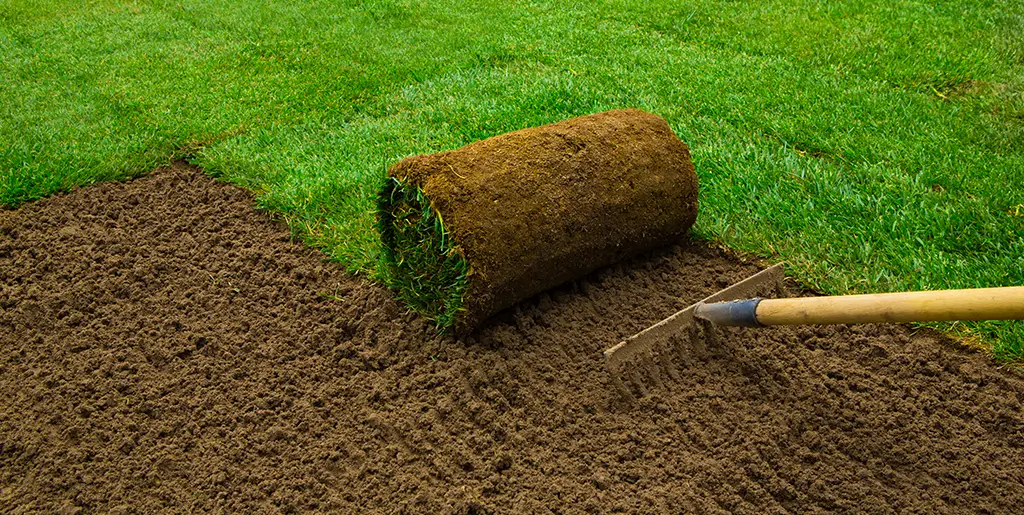
Finding the Best Deals
Researching Local Suppliers
To find the best turf near me, start by researching local suppliers. Look for online reviews and ratings, ask for referrals from friends or neighbours, and visit local garden centers to compare prices and options. By personally visiting suppliers, you can thoroughly examine the quality of the turf prior to making a purchase.
Seasonal Sales and Discounts
Taking advantage of seasonal sales can significantly reduce your costs. Many suppliers offer discounts during off-peak seasons or holiday sales. Planning your purchase around these times can yield substantial savings.
Negotiation Tips
Don’t hesitate to negotiate with suppliers. Many are willing to offer discounts, especially if you’re buying in bulk or during a slow sales period. Be polite but firm in your negotiations to secure the best deal possible.
Quality vs. Cost
Balancing Act
Balancing quality and cost is crucial to getting the best value for your money. While it’s tempting to go for the cheapest option, lower-quality turf can result in higher maintenance costs and a shorter lifespan. Invest in good-quality turf that fits within your budget to ensure long-term satisfaction.
Inspecting Turf Quality
When inspecting turf, look for the following quality indicators:
- Colour: Healthy turf should have a consistent, vibrant colour.
- Texture: It should feel soft and dense underfoot.
- Root System: A strong root system indicates healthy turf.
Inspecting these factors will help you choose the best quality turf for your budget.
Warranties and Guarantees
Warranties and guarantees provide peace of mind and protect your investment. Reputable suppliers often offer warranties on their products, covering defects and ensuring quality. Ensure you understand the terms and conditions of any warranty offered.
Installation and Maintenance
DIY vs. Professional Installation
Installing turf yourself can save money, but it requires time, effort, and some expertise. Professional installation ensures proper laying and long-term durability but comes at a higher cost. Evaluate your skills and time availability to decide which option is best for you.
Maintenance Practices
Proper maintenance is key to a beautiful, long-lasting lawn. For natural turf, this includes regular mowing, watering, fertilizing, and aeration. Artificial turf requires less maintenance but still needs occasional cleaning and brushing to maintain and keep it looking its best.
Cost-effective Maintenance Tips
Here are some tips to minimize ongoing maintenance costs:
- Water Wisely: Use efficient irrigation systems to reduce water usage.
- Mow Correctly: Keep your mower blades sharp and mow at the correct height to promote healthy growth.
- Fertilize Properly: Use slow-release fertilizers to reduce the frequency of applications.
Implementing these practices will help you maintain a beautiful lawn without overspending.
Choose the Best Turf
Choosing the best turf near me involves careful consideration of your needs, budget, and the various types of turf available. By understanding your lawn’s requirements, setting a realistic budget, and balancing quality with cost, you can find the perfect turf to enhance your property’s appeal. Remember to research local suppliers, take advantage of seasonal discounts, and prioritize quality to ensure long-term satisfaction. With these tips, you’ll be well on your way to a beautiful, cost-effective lawn that meets all your needs.
For personalized advice and top-quality turf options, consider reaching out to Lavington Turf Farms – your local experts ready to help you achieve the perfect lawn. Contact us today!
The Future of Lawn Care: Sustainable Practices and Innovations for Eco-Friendly Landscaping
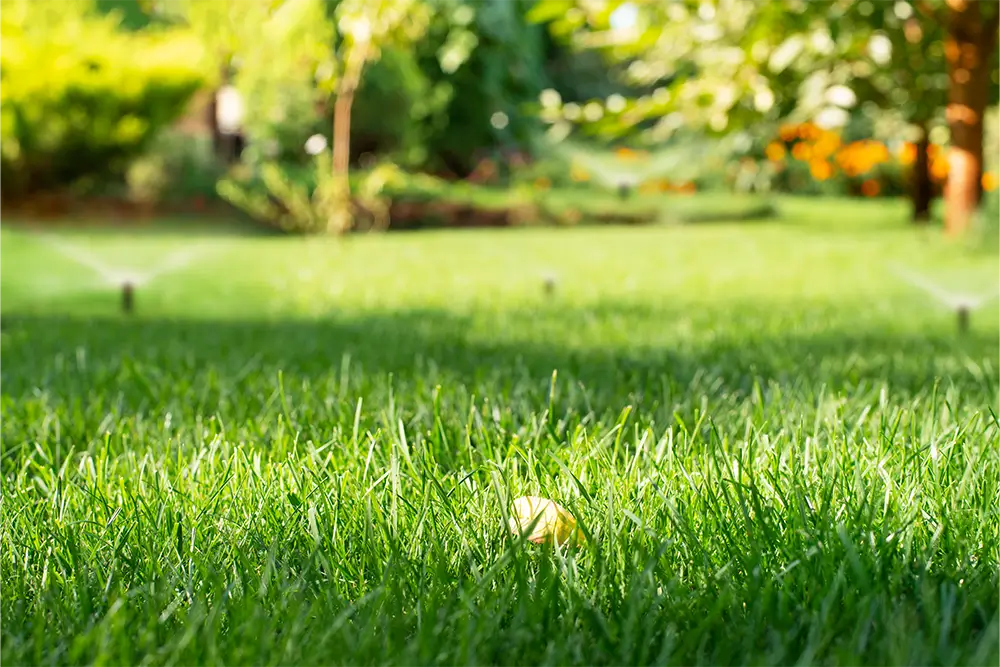
In landscaping, the concept of sustainability is gaining increasing importance. As environmental awareness grows, so does the need for eco-friendly landscaping practices. In this blog post, we’ll delve into the future of lawn care, exploring sustainable practices and innovative technologies to promote eco-friendly landscaping.
Understanding Eco-Friendly Landscaping
Eco-friendly landscaping encompasses principles aimed at reducing environmental impact while creating beautiful outdoor spaces. It emphasizes water conservation, biodiversity promotion, soil health enhancement, and energy efficiency. By prioritizing these aspects, eco-friendly landscaping seeks to minimize chemical usage and encourage natural solutions for maintaining lush lawns and vibrant landscapes.
Sustainable Lawn Care Practices
Water Conservation
Efficient irrigation techniques like drip irrigation and rainwater harvesting are crucial components of eco-friendly landscaping. Drip irrigation systems directly deliver water to the roots of plants, minimizing evaporation and runoff compared to conventional sprinkler systems. Rainwater harvesting requires collecting and storing rainwater for later use, decreasing the reliance on municipal water sources during dry periods
Moreover, incorporating smart irrigation technology can further enhance water conservation efforts. IoT-enabled sensors measure soil moisture levels and weather conditions in real time, allowing for precise adjustments to watering schedules. Automated irrigation controllers adjust watering times and durations based on environmental factors, ensuring optimal moisture levels for plant health while minimizing water waste.
Furthermore, selecting drought-tolerant grass species and implementing xeriscaping techniques can significantly reduce water consumption in landscaping. Xeriscaping involves designing landscapes that require minimal irrigation by using native plants, mulch, and efficient irrigation systems. By embracing water-efficient landscaping practices, homeowners can conserve water resources and reduce their environmental footprint.
Biodiversity Promotion
Promoting biodiversity in landscaping is essential for creating resilient ecosystems that sustain a wide variety of plant and animal species. Using native plants in the landscape design is a cornerstone of biodiversity promotion. Native plants are inherently adapted to the local climate and soil conditions, resulting in them being well-suited to flourish without the need for excessive watering or chemical inputs.
In addition to providing habitat and food sources for native wildlife, native plants contribute to the overall health of the ecosystem by supporting pollinators such as bees, butterflies, and birds. By creating pollinator-friendly habitats, homeowners can help combat pollinator decline and promote ecosystem resilience.
Furthermore, implementing habitat features such as bird feeders, bird baths, and nesting boxes can entice a range of bird species to the landscape. Birds have an essential role in controlling insect populations and dispersing seeds, further enhancing ecosystem diversity.
Soil Health Enhancement
Improving soil health is essential for maintaining healthy and resilient landscapes. Healthy soil provides a supportive environment for plant growth, helps retain moisture, and prevents erosion. Utilizing composting and organic soil amendments is a key strategy for enhancing soil health in landscaping.
Composting involves recycling organic waste materials like food scraps, yard waste, and leaves to produce nutrient-rich compost. Incorporating compost into the soil improves soil structure, increases microbial activity, and enhances nutrient availability to plants.
Moreover, reducing reliance on chemical fertilizers and pesticides helps preserve soil health and minimize environmental pollution. Organic fertilizers like compost tea, bone meal, and fish emulsion provide essential nutrients to plants without the harmful side effects of synthetic fertilizers.
Additionally, practicing soil conservation techniques such as mulching, cover cropping, and no-till gardening helps protect soil structure and minimize erosion. By prioritizing soil health in landscaping practices, homeowners can create thriving ecosystems that support healthy plant growth and biodiversity.
Energy Efficiency
Promoting energy efficiency in landscaping involves reducing energy consumption associated with lawn maintenance activities such as mowing, trimming, and irrigation. Exploring alternatives to traditional lawns, such as meadow-scaping or utilizing top quality, can significantly reduce the need for frequent mowing and maintenance.
Meadowscaping involves planting a diverse mix of native grasses, wildflowers, and ground covers to create a low-maintenance landscape that mimics natural prairie ecosystems. Meadows require minimal mowing and fertilization, making them a sustainable alternative to traditional turf grass lawns.
Furthermore, utilizing electric or battery-powered lawn equipment reduces carbon emissions and noise pollution compared to gas-powered equipment. Electric mowers, trimmers, and blowers offer comparable performance to their gas-powered counterparts while providing environmental benefits and reducing reliance on fossil fuels.
Moreover, incorporating energy-efficient lighting fixtures and solar-powered landscape lighting can further enhance energy efficiency in outdoor spaces. LED lighting consumes less energy and lasts longer than traditional incandescent bulbs, making it a cost-effective and environmentally friendly lighting option.
By prioritizing energy-efficient landscaping practices, homeowners can reduce their environmental footprint, lower utility costs, and create sustainable outdoor spaces that improve the beauty and functionality of their properties.
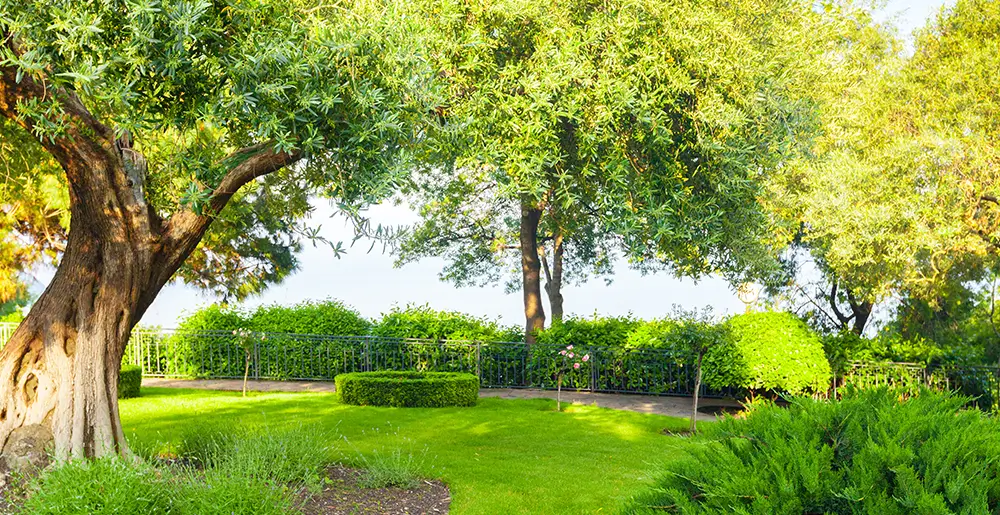
Innovations in Eco-Friendly Landscaping
Smart Irrigation Systems
IoT-enabled sensors and automated watering schedules allow for precise water management based on real-time weather and soil conditions. Smartphone apps provide homeowners with remote monitoring and control capabilities, optimizing water usage and promoting water conservation.
Sustainable Lawn Care Products
Bio-based fertilizers and natural weed control solutions offer effective alternatives to traditional chemical products. By harnessing the power of natural ingredients, these eco-friendly products provide safe and sustainable solutions for maintaining a healthy lawn.
Green Roof and Vertical Gardens
Utilizing rooftops and vertical spaces for greenery expands urban green space and provides numerous environmental benefits. Green roofs help reduce the heat island effect, improve air quality, and enhance biodiversity, making them an excellent option for eco-friendly landscaping in urban environments.
The Role of Technology in Sustainable Lawn Care
Advancements in lawn care robotics and autonomous mowers streamline maintenance tasks while reducing labour and resource requirements. Data-driven insights obtained through IoT devices and sensors enable homeowners to optimize lawn care practices, minimize resource usage, and promote sustainability.
Challenges and Opportunities in Adopting Eco-Friendly Landscaping Practices
Overcoming barriers such as initial costs and lack of awareness remains a challenge in the widespread adoption of eco-friendly landscaping practices. However, policy support and incentives can play a crucial role in promoting sustainable lawn care and encouraging homeowners to embrace eco-friendly landscaping for a greener future.
Incorporate Eco-Friendly Practices
The future of lawn care lies in embracing sustainable practices and leveraging innovative technologies to create eco-friendly landscapes. By prioritizing water conservation, biodiversity promotion, soil health enhancement, and energy efficiency, homeowners can contribute to environmental conservation while enjoying lush and vibrant outdoor spaces. Together, let’s pave the way for a more sustainable future through eco-friendly landscaping.
Having a healthy lawn and utilizing eco-friendly practices can substantially impact the environment. Be sure to look into the environmental benefits of our turf and contact us for any questions or to request a quote.